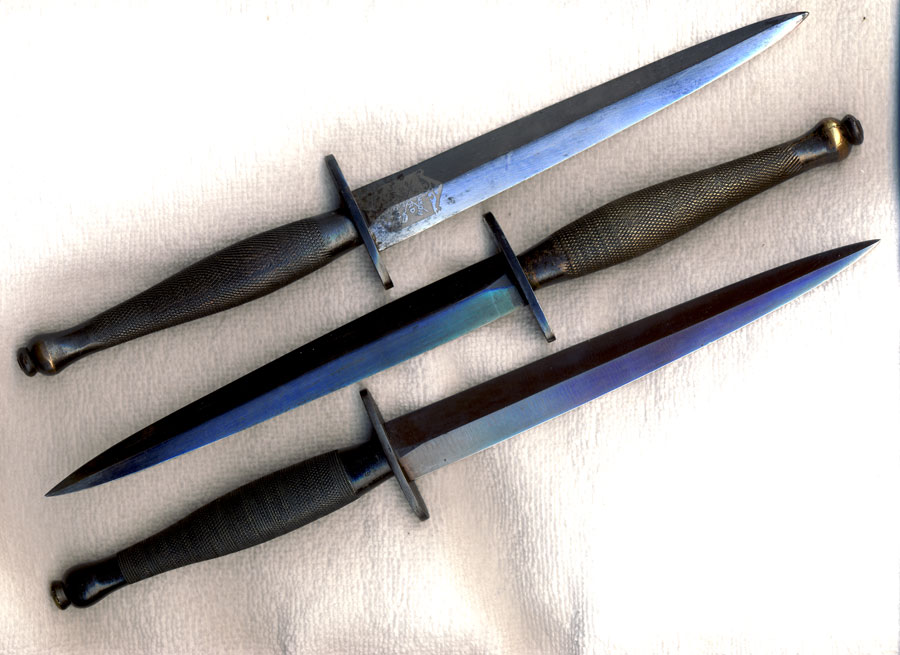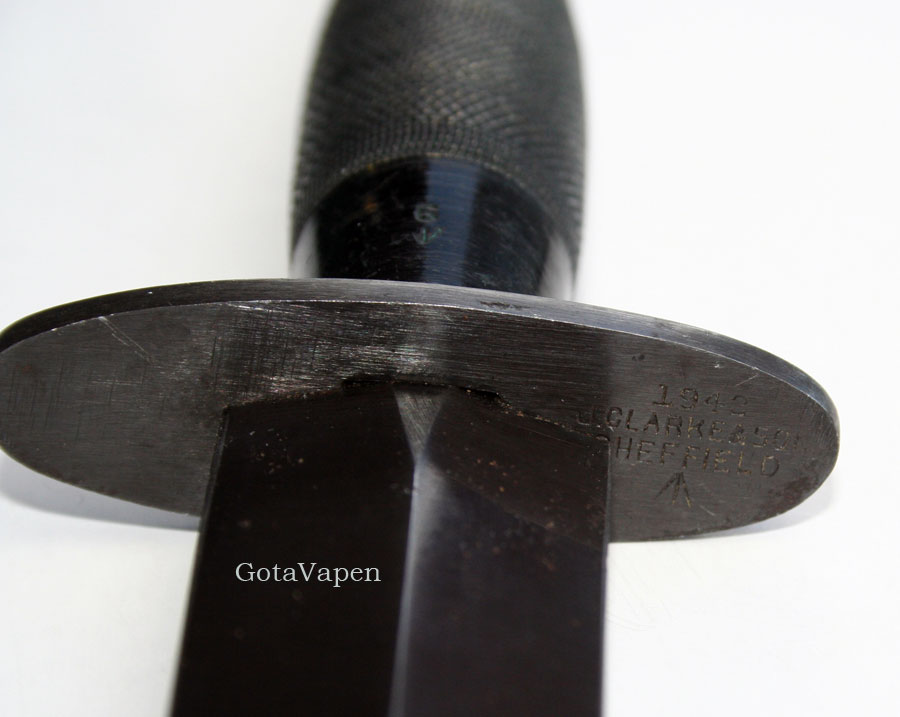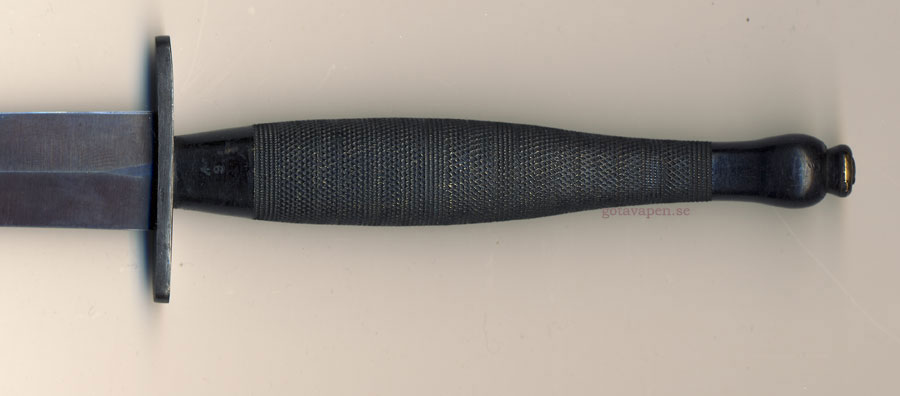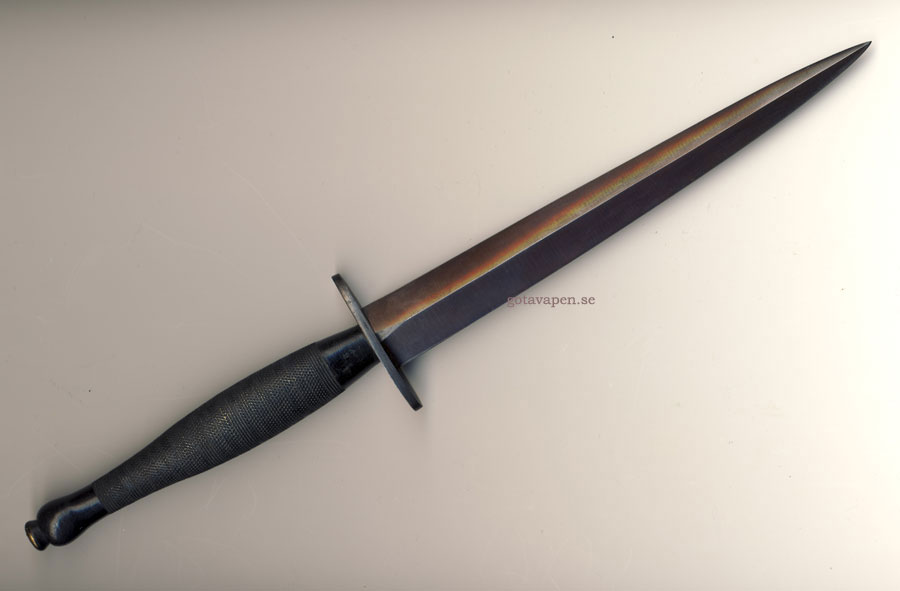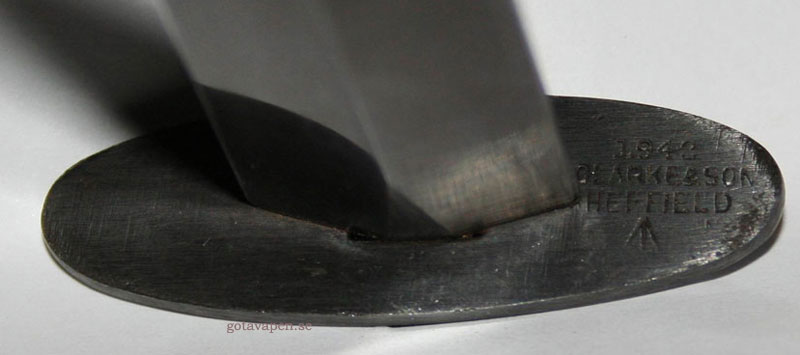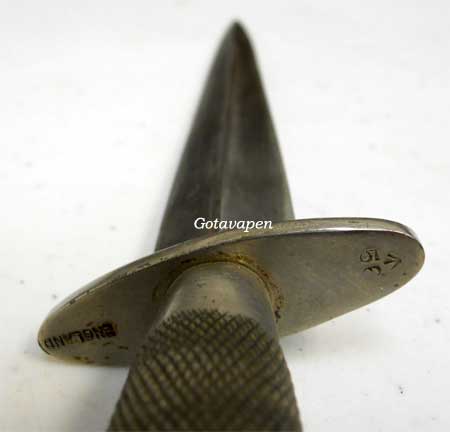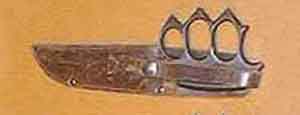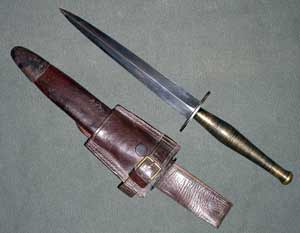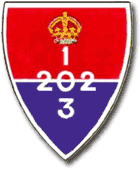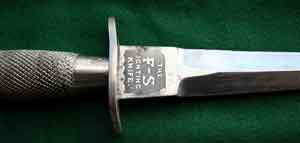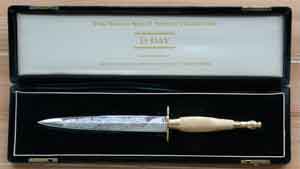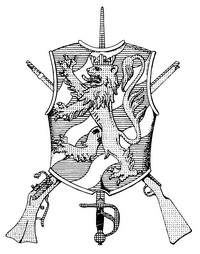|
|
Fighting knives used by British commandos and SOE during WW2 |
|
|
Fairbairn-Sykes fighting knife - Second Pattern
part 2.
|
|
Text and pictures by
Olof Janson unless otherwise stated. |
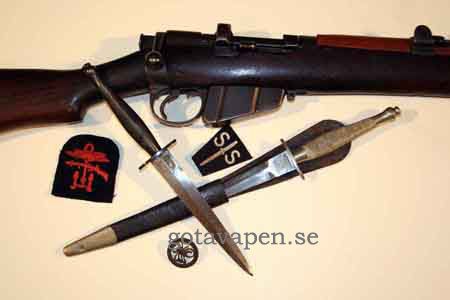 |
Special
honour should be given to:
-
Robert Wilkinson-Latham,
-
Ron Flook,
- Roy Shadbolt.
Who
have given me much assistance.
On the picture to the left:
LeeEnfield SMLE NoI MkIII
F-S 2nd Pattern and 1st
Pattern
Patches are Combined
Operation and No 2 Commando
and Badge of LRDG |
updated
2014-05-12
2nd Pattern: F-S Fighting
knives with Wilkinson Sword logo-type.
2nd Pattern: F-S Fighting knives without Wilkinson Sword
logo-type.
Broad arrow
 B2
B2
was also made by Wilkinson Sword.
|
Until
1942 Wilkinson Sword had been the only company which produced the F-S
knives. In 1942 there came two more manufacturers.
One was later known for its acceptance mark
“
 B2”. It was made according to the drawings of the black hilt 2nd
Pattern Wilkinson F-S knife. The
close resamblance is the reason why many
collectors assumed that the acceptance mark B2 stands for Wilkinson. Finally
proof was found by Robert Wilkinson-Latham that Wilkinson Sword actually
produced the knives marked
“
B2”. It was made according to the drawings of the black hilt 2nd
Pattern Wilkinson F-S knife. The
close resamblance is the reason why many
collectors assumed that the acceptance mark B2 stands for Wilkinson. Finally
proof was found by Robert Wilkinson-Latham that Wilkinson Sword actually
produced the knives marked
“
 B2”.
B2”.
Wilkinson Sword and J. Clark & Son were the only known producers
of these early 2nd Pattern F-S knives. |
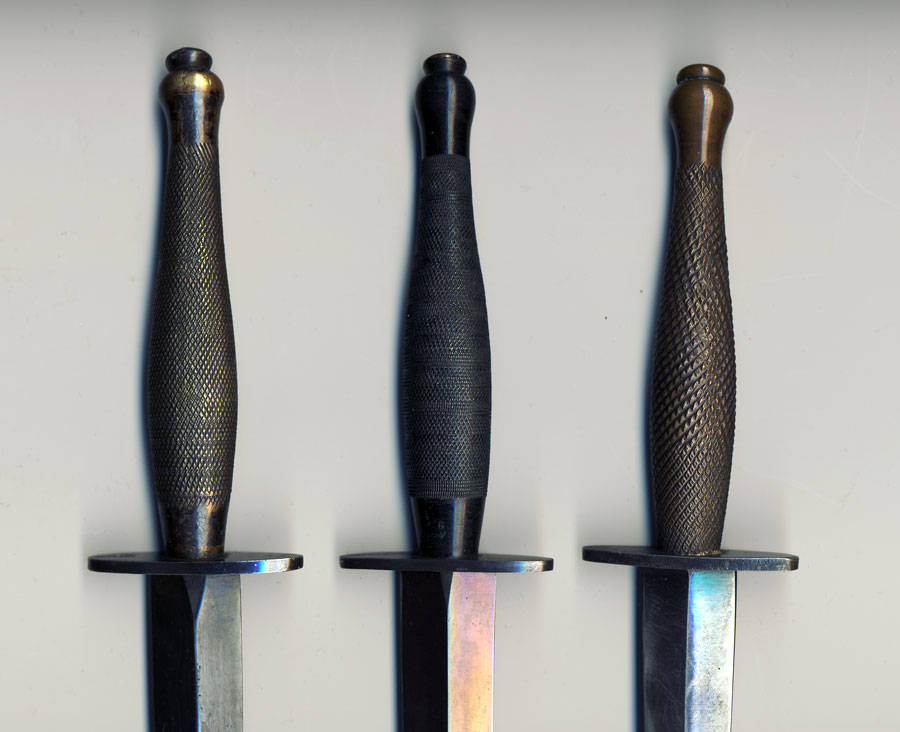 |
From left to right:
2nd Pattern
B2 |
2nd
Reverse knurled grip |
2nd
Pattern -
US OSS Stiletto |
Standard
2nd Pattern knife without F-S logo
 |
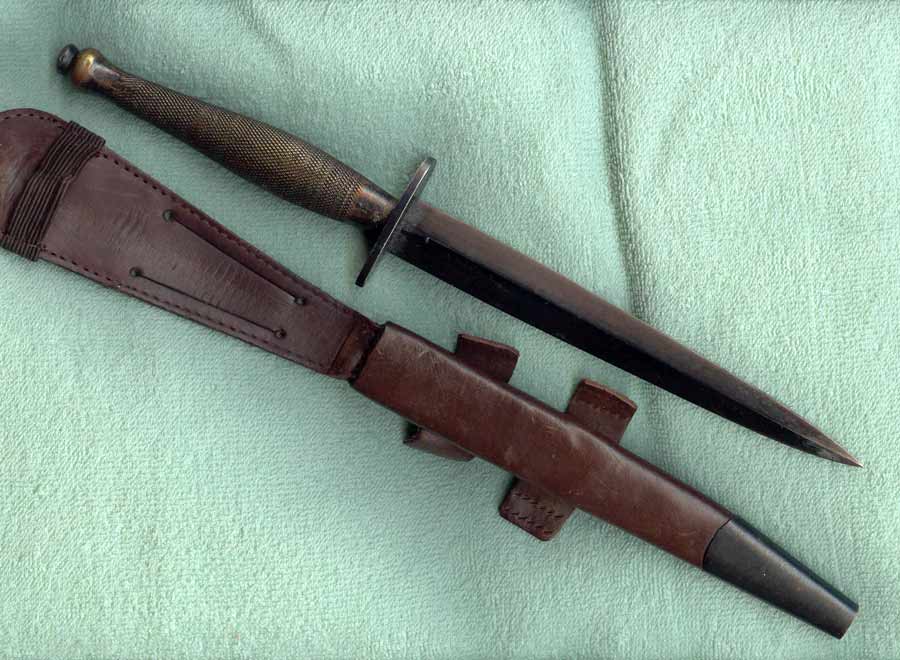 |
|
This is the
ordinary
MoD F-S Fighting knife
2nd
Pattern. Please
note the scabbard with the silent strap and the four leather tabs intended
to stitch to the uniform.
This
knife is marked
 B2 on the crossguard. B2 on the crossguard.
(Private collection) |
More
2nd Pattern knives
marked
 B2 B2
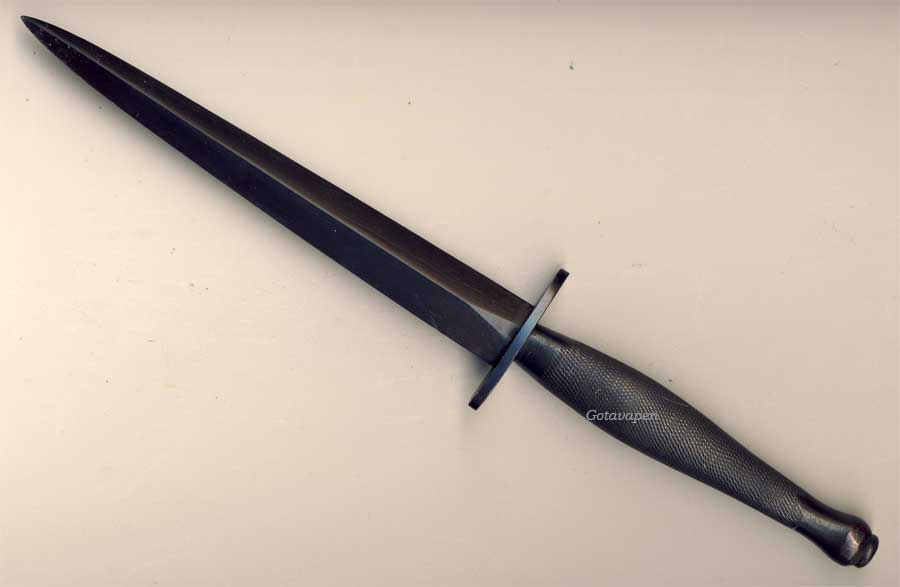 |
| Please notice the large wedge on these B2
knives, both very close to mint condition. |
 |
|
These are the
ordinary
MoD F-S Fighting knife
2nd
Pattern.
These
knives are both marked
 B2 on the crossguard. B2 on the crossguard.
(Private collection) |
|
Normally these 2nd Pattern knives are not marked with any name or mark referring to the
manufacturer. The exception is Wilkinson Sword who etched their knives with
their logo. |
Wilkinson Sword Company realised the demand for the knife.
According to Robert Wilkinson-Latham, "Deliveries were made to certain
specified depots but the bulk of the production as it became available was held
at the London showrooms, where they were given out against signed chits."
For not only SOE, but the whole of Britain's special forces clamored for the
Fairbairn-Sykes.
Fairbairn said once: "The day they arrived, there was a near riot in the
rush to buy them."
Ministry of Defence (MoD) has specified the length of the blade between 6.6
to 6.9 inches (168-175 mm). However blades are found as short as 160 mm (6.3
inches). There are some likely explanations for this.
The SOE brought these knives to Norway which adopted the knife after the war.
The F-S Fighting knife was used extensively in Norway by the partisans “Hjemmefronten”.
The Second Pattern knives are rare to find.
|
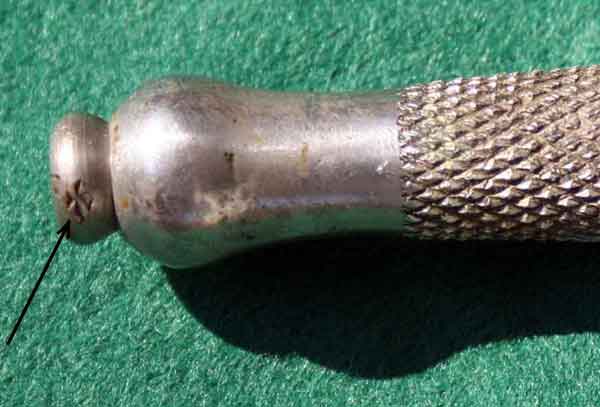 |
The
hilt was secured to the tang with a pommel nut. It was fixed by hand on top
of the tang.
The extra material of tang
was cut outside the nut. Then the nut was put in a vice and the grip was
grasped and tightened. After that the blade was put down in a vice with lead
lining and the tang was hammered out. The indentation from the vice remained
on the nut as seen here on a 2nd Pattern F-S knife. |
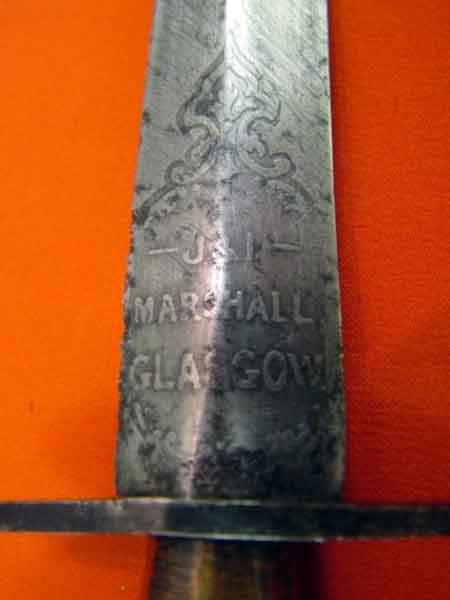 |
This is
another exception – this 2nd Pattern knife was made by J. & I. Marshall
in Glasgow.
According to Ron Flook Marshall’s is along established cutlery retailers
with a long history. They have given him the information that the knife most
likely was made by J. Clark and Sons. Blade length 6.75 inches and LOA 11.5
inches.
|
[Top
of the page]
|
Grip with reverse knurling. |
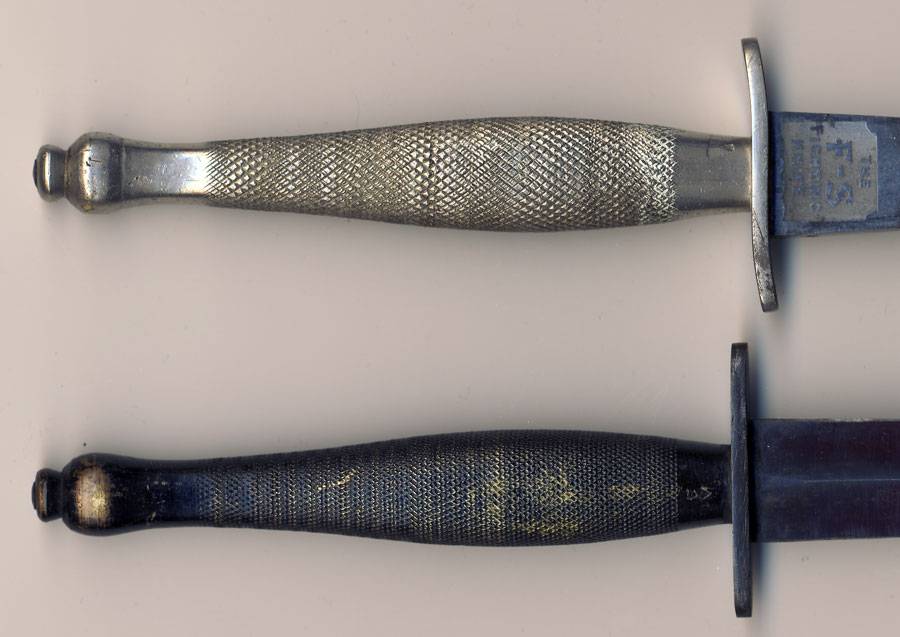 |
|
On this
picture above is a normal line cutting on the nickel plated 1st
Pattern knife on top and the Reverse knurling on the black knife under.
(Private collection) |
|
Normal
diamond grip
The normal
grips of the F-S knives have a pattern with raised diamonds on the grip. This
pattern is similar to the checkered cut on the grips of rifles. It was brought
forward by a wheel with lines which was rolled over the grip pressing the lines
into the grip so the diamonds were raised.
Reverse
knurled grip.
On this
rare variant, a wheel with diamonds was rolled over the grip that punched the
diamond pattern into the grip and raised the lines instead.
According to Dr. William Windrum
in his book ‘The Earliest Commando Knives’ page 57-58 H.G. Long marked their
Commando knives with
9.
This is however his own theory. I have seen knives marked both
with 9 and J. Clark & Son
He says that this mark is very rare. There is only a handful known specimens
with
 9.
There are
not many reports about these knives of 2nd Pattern with reversed
knurling instead of the standard cut in diamond pattern. I only know knives with
 4
and a couple of knives with Arrow 4
and a couple of knives with Arrow
 9.
9.
Most likely both marks come from the Sheffield area.
It is for sure that some knives made by
Clark & Son are marked with
 9 as you can see on this picture below.
9 as you can see on this picture below.
Read more about
examination stamps here
|
|
Reversed
knurled F-S knife from Clark & Son, which is marked
 9 9
(Private collection) |
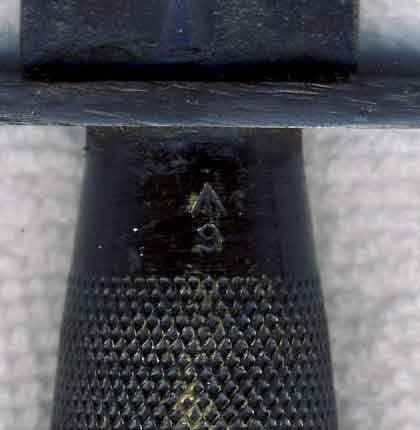 |
|
Another
variation has an unusual fat handle. It is referred to as the Fat Man . Here is
such a typical knife.
|
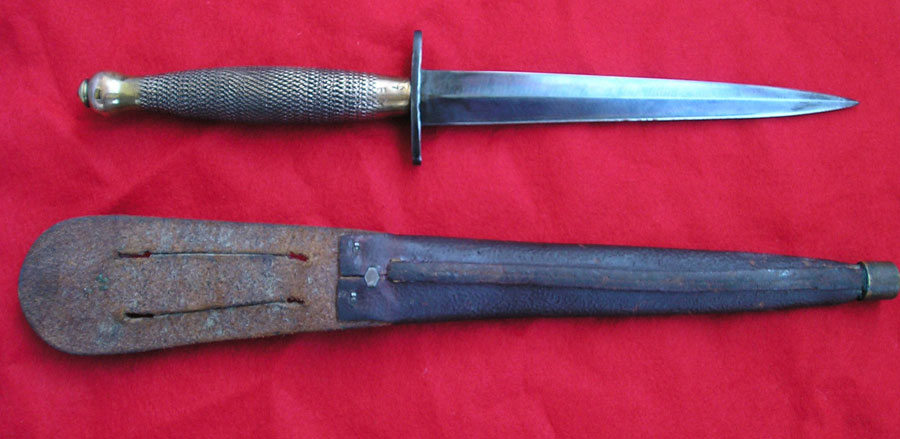 |
|
Fat man with unusual US made scabbard
(Courtesy of Jarle Ostensvik) |
|
This very
rare example is believed to be of possible American origin, and evidence might
even suggest that Landers, Frary, & Clark could have been the manfacturer. This
conclusion has been reached by noted author of "The Earliest Commando Knives",
Dr. William Windrum.
However it
has been proved that these knives also were made by the Sheffield company J.
Clarke & Son who also made the reverse knurled grip pattern.
Scabbard is
very rough, sewn and riveted like a hunting type.
However the
standard FS sheath was also used which can be seen on the picture below. This is
also reported by Ron Flook in his excellent book BRITISH AND COMMONWEALTH
MILITARY KNIVES |
 |
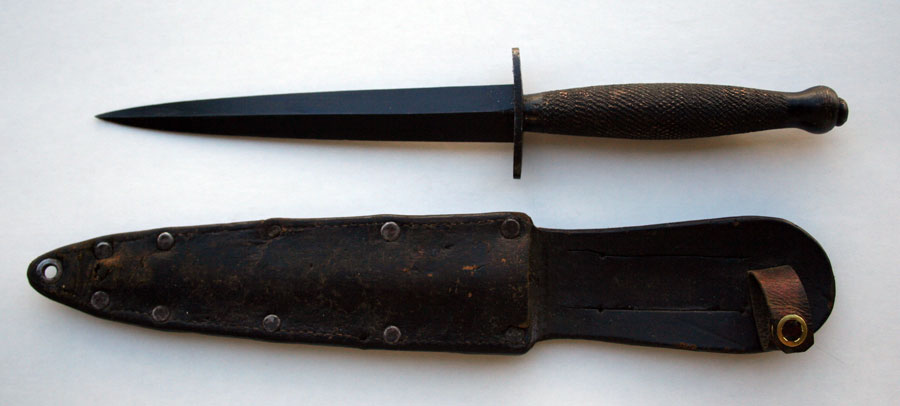 |
|
"Fat
man" most likely made by by Clark & Son
marked
 9
with the standard, very rough, scabbard 9
with the standard, very rough, scabbard
(Private collection) |
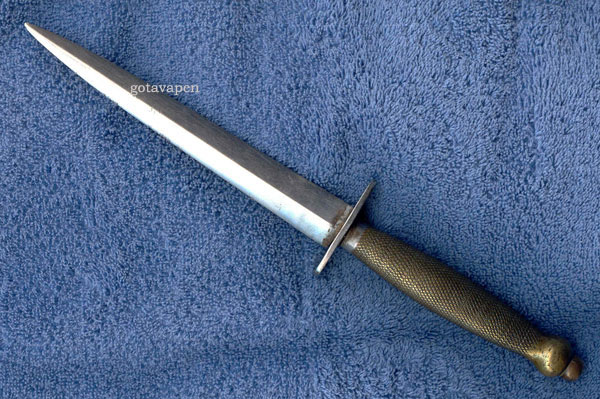 |
Another Fat Man
(Private collection) |
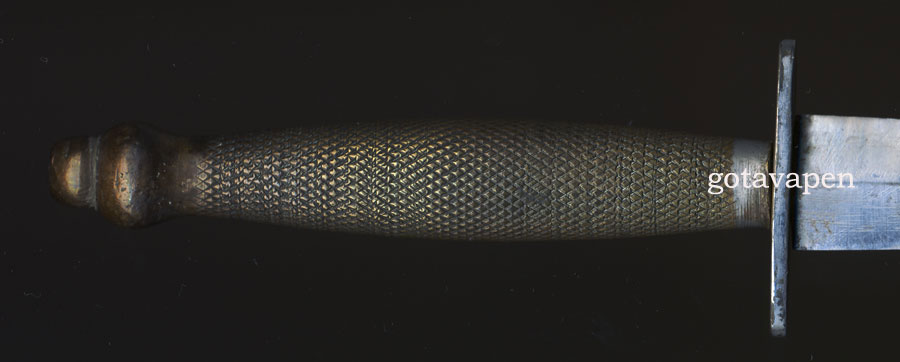 |
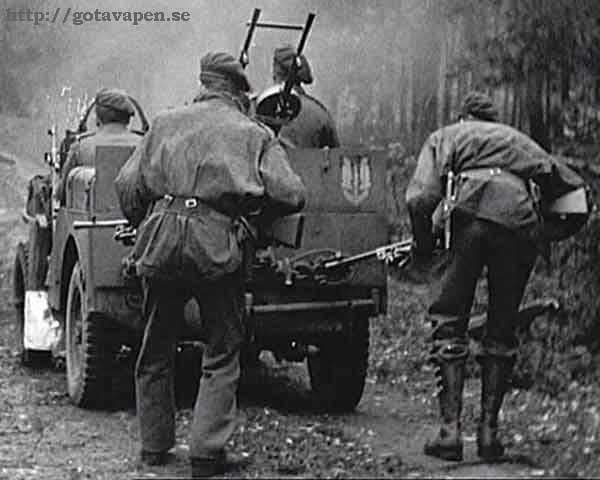 |
Robert
Buerlein says in his book 'Allied Military Fighting Knives' that SAS used the
Fat man type of F-S knives and this picture from the liberation of France
support that.
This SAS
patrol is heavily armed. The truck is as usual equipped with a twin Vickers K MG.
Both Commandos walking carry Bren LMG and the soldier to the right also a FAT
MAN FS knife.
|
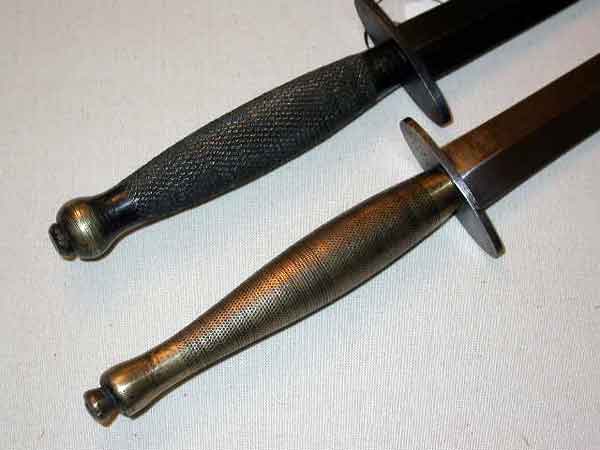 |
Top the grip of a Fat Man
and
below a knife with reverse
knurling
Both made by J. Clarke & Son.
 4 4
It is significant how well made these 'J. Clarke & Son' knives are.
Roy Shadbolt's collection |
ALL BRIGHT 2nd Pattern F-S Commando knives
[Top
of the page]
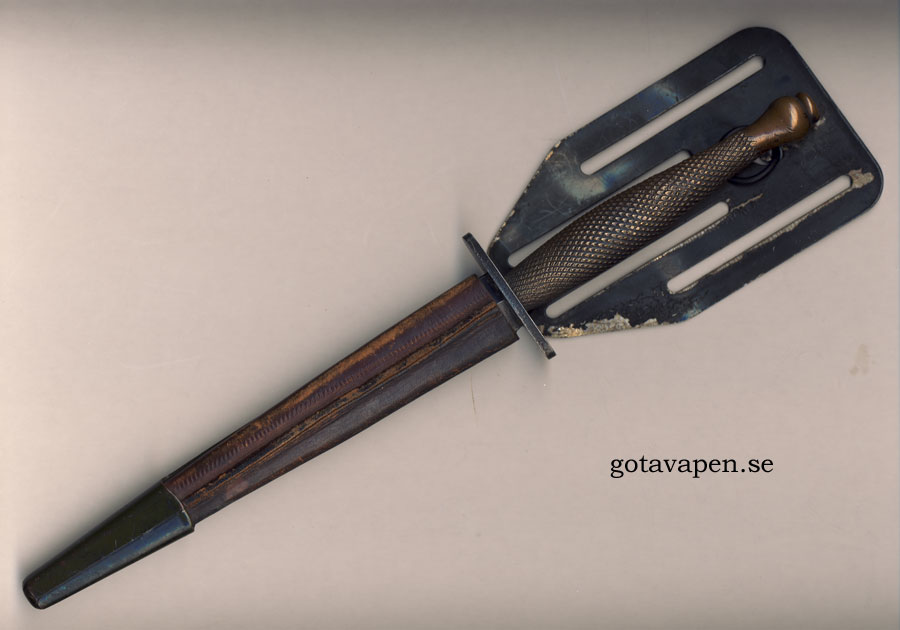 |
|
O.S.S. Stiletto
(Private collection) |
|
The O.S.S.
Stiletto, which was made by Landers, Frary & Clark, can also be referred to as a
2nd Pattern type of Commando knife. You can read
more about it here.... |
2nd Pattern: F-S Fighting
knives with Wilkinson Sword logo-type.
[Top
of the page]
[Top
of the page]
References:
|
Robert Wilkinson Latham |
His own web
site |
|
Alan W. Locken |
Commando 1940 - 1945 |
|
Robert A. Burlein |
Allied Military Fightingknives |
|
Ron Flook
|
British and Commonwealth military knives. |
|
Fredrick J. Stephens |
Fighting Knives |
|
Frank Trzaska |
The O.S.S. Stiletto - Knife World February 1998. |
|
Frank Trzaska |
The Raider Stiletto - Knife World July 1997 |
|
Kelly Yeaton |
The First Commando Knives. |
|
John Nowhill & son |
Sheffield |
|
Michigan
knives |
|
|
Dr. William Windrum |
The earliest commando knivesAllan W. Locken – Commando
1940 - 1945. |

|

